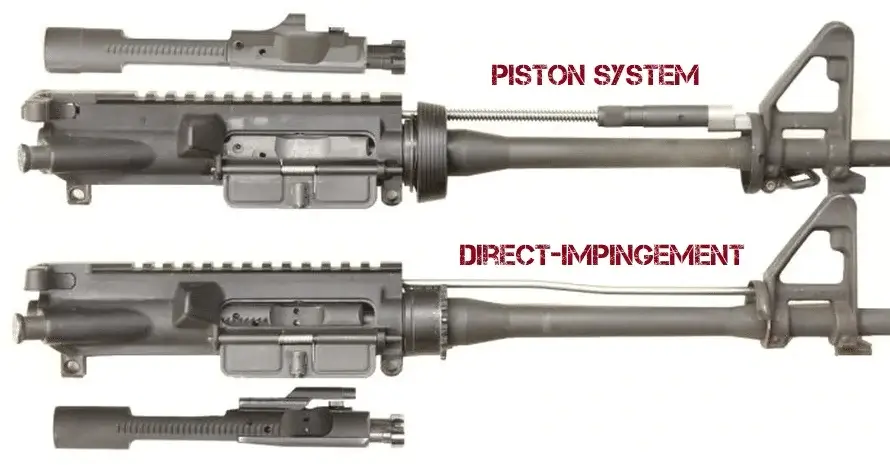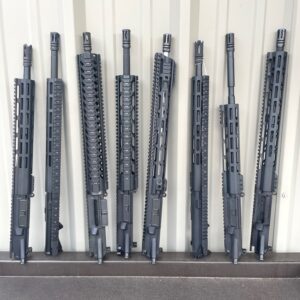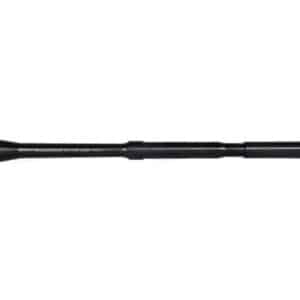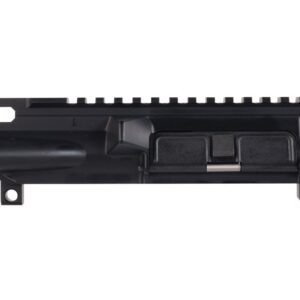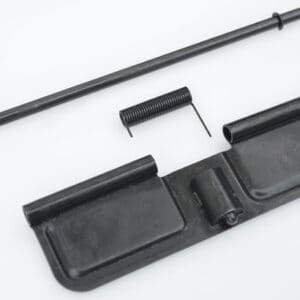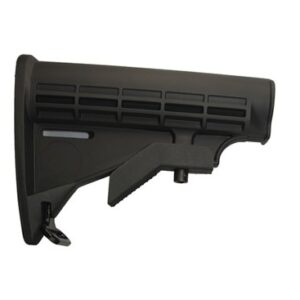Handguards do three things well: they shield your support hand from heat, provide mounting for lights and grips, and help the rifle balance the way you like. On the AR platform, there are two main approaches: drop-in and free-float. This guide explains both and shows where each one makes sense so you can choose the right option for a new build or an upgrade.
At Mid State Firearms, we help shooters navigate these choices every day, and this guide will compare both types to help you choose the right option for your build or upgrade.
What Is a Drop-In Handguard?
A drop-in handguard is the traditional, no-gunsmith route. It uses a two-piece shell that meets in the middle. The rear end seats under the delta ring, and the front end sits in the handguard cap just behind the front sight base. This design works best on standard carbines that keep a fixed front sight and a conventional gas block. When people mention an AR15 handguard in a stock configuration, they often mean an AR15 drop-in handguard.
Drop-In Handguards: Pros and Cons
| Area | Pros | Cons |
| Cost | Usually, the most affordable path for an AR-15 handguard upgrade | Premium models can approach free-float pricing |
| Installation | Goes on with basic tools, no barrel removal, uses the delta ring and cap | The delta ring spring can be stiff; some models need careful alignment |
| Availability | Easy to find for common carbine lengths and patterns | Fewer true extended-length options than free-float |
| Compatibility | Pairs well with mil-spec rifles that keep a fixed front sight base and standard gas block | Less friendly to non-standard front ends or low-profile conversions |
| Mounting interfaces | Offered as M-LOK, KeyMod, and classic quad-rail | Two-point clamp is less rigid for heavy lights or lasers |
| Zero retention | Fine for hand stops and lights in routine use | Sights or lasers on the handguard can see a slight zero shift under stress |
| Heat management | Simple polymer options insulate the hand well | Some designs vent heat less efficiently during long strings of fire |
Popular Drop-In Handguard Manufacturers
Magpul is known for MOE and MOE SL polymer lines that keep weight and cost down while adding generous M-LOK real estate. BCM (Bravo Company) offers rugged polymer and aluminum options with smart texturing and solid lock-up. Knight’s Armament built its reputation with RAS drop-in rails and a long military service record. Troy Industries is favored for stout quad-rail and modular designs that hold up on hard-use carbines. Midwest Industries rounds things out with clean machining, consistent fit on mil-spec setups, and a broad catalog that makes matching parts simple.
What Is a Free-Float Handguard?
A free-float handguard attaches to the barrel nut and doesn’t touch the barrel, which helps keep the point of impact steady when you use a sling, a bipod, or a firm support-hand grip. Most builds pair it with a low-profile gas block so the rail can extend past the gas port. This design has become the modern standard for AR-15 Handguards because it offers more usable mounting space and consistent accessory alignment. If a catalog lists an AR-15 Free Float Handguard, this is the setup they mean.
Free-Float Handguards: Pros and Cons
| Area | Pros | Cons |
| Accuracy & zero | Rail doesn’t touch the barrel, so POI stays steadier under sling or bipod load | Gains depend on barrel and ammo quality, not the rail alone |
| Mounting space | Long, continuous top rail with generous M-LOK for lights, grips, bipods, switches | More rail can tempt over-accessorizing, which adds weight |
| Heat behavior | Open slots and aluminum shed heat efficiently between strings | Rail can feel hot without panels or gloves during high-volume fire |
| Stability | Rigid barrel-nut interface holds lasers/irons more consistently than two-point clamps | Poor torque or timing during installation can undermine rigidity |
| Installation | With proper tools, setup is repeatable across builds | Requires armorer tools, correct torque, and gas-tube alignment |
| Cost & weight | Broad price range, many models are quite light for their length | Generally pricier than basic drop-ins, sometimes a bit heavier than the smallest drop-ins |
Popular Free-Float Handguard Manufacturers
Geissele is known for MK4, MK8, and MK14 rails that emphasize stiffness, strong barrel-nut interfaces, and professional-grade fit. Daniel Defense built a reputation through programs using the RIS II family, valued for robust lock-up and precise machining. Aero Precision offers budget-friendly AR-15 Handguards that keep alignment true and provide clean M-LOK geometry for first-time upgrades. Expo Arms balances price and performance with straightforward installation and practical slot layouts. SLR Rifleworks focuses on slim, ergonomic tubes with excellent machining and effective, lightweight barrel-nut systems. Sons of Liberty Gun Works delivers duty-minded rails with stout attachment and careful QC, popular among builders who expect hard use.
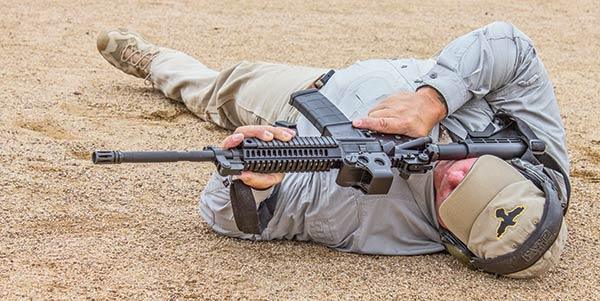
Key Factors When Choosing a Handguard
Ease of installation. If you do not own armorer tools, a drop-in is simpler to fit. Free-float rails require correct torque and timing at the barrel nut, which adds setup time and a bit of skill. For safety guidelines on firearm modifications, consult NSSF resources.
Mounting security. A handguard that locks to the barrel nut resists flex when you load a sling or bipod. Two-point clamped drop-ins are fine for lights and grips during routine use, but are less rigid for precision accessories.
Accessory interfaces. Most modern tubes favor M-LOK for strength and weight savings. Picatinny and older KeyMod still appear on some AR15 handguards, so match the rail to the accessories you already own.
Ventilation and heat. Open slot geometry helps the tube shed heat and gives hot air a path out. If you shoot long strings, consider rails with generous venting or add panels and gloves for comfort.
Length and weight. Longer rails protect the gas system and give more reach, but they add ounces at the muzzle. Choose the shortest length that clears your gas block and fits your stance.
Appearance and ergonomics. Slim free-float tubes feel modern and tuck nicely into the hand. Classic polymer drop-ins preserve the carbine look and can insulate well against heat.
Cost. Drop-ins typically win on price for common AR-15 handguards. Free-float options range from budget to premium and can be a better value if you want accuracy and accessory space in one upgrade.
Free-Float vs Drop-In: Which One to Choose?
| Category | Free-Float | Drop-In |
| Installation | Needs tools and proper torque at the barrel nut | Fits with basic tools using the delta ring and handguard cap |
| Price | Generally higher, with a wide range from budget to premium | Usually, the lowest cost entry for AR15 handguards |
| Accuracy | Rail does not touch the barrel, POI stays steadier under load | Adequate for general use, more POI shift if you load the handguard |
| Compatibility | Works best with a low-profile gas block on modern builds | Ideal with fixed front sight bases and standard gas blocks |
| Stability | Rigid at the barrel nut, better for lasers and irons | Two-point clamp is less rigid for heavy accessories |
| Weight | Often light for its length, especially slim tubes | Shorter models can be lighter overall on basic carbines |
Summary. Choose a drop-in if you are a beginner, on a tight budget, or keeping a standard carbine. Choose a free-float if your priorities are accuracy, accessory space, or steadier zero with a sling or bipod when comparing AR-15 handguard types.
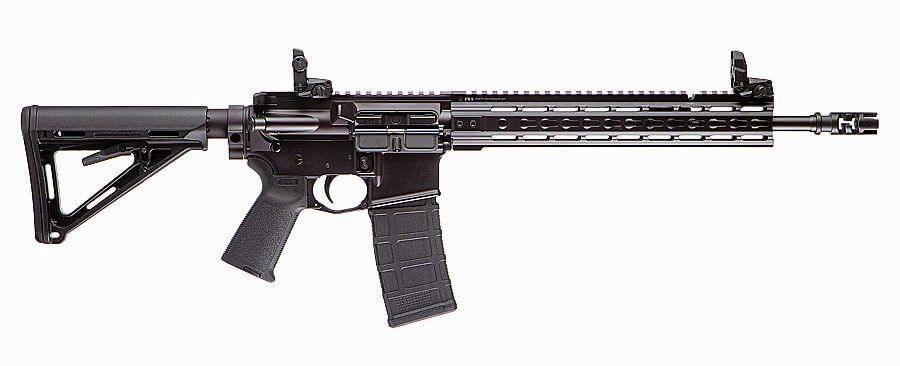
Common Installation Issues and Solutions
Delta ring tension. The spring can be stubborn. Use a delta-ring tool or a helper to pull the collar back, then seat both halves evenly before releasing tension.
Gas-tube alignment on free-floats. If the tube drags in the upper, back off, re-time the barrel nut, and confirm the tube passes freely through the receiver hole.
Front sight base clearance. A fixed FSB limits rail length. Keep a carbine-length drop-in or swap to a low-profile gas block before installing a long free-float.
Loose rail after range time. Recheck barrel-nut torque and thread prep on free-floats, or verify the handguard cap and delta ring are fully seated on drop-ins.
Heat discomfort. Add rail covers or a vertical or angled grip for insulation. Slot geometry and panels make a noticeable difference during high-volume shooting.
Making Your Handguard Decision
Start with how you actually shoot. If you want a straightforward, budget-friendly refresh for a standard rifle, a drop-in is the practical choice. If you are chasing tighter groups, steadier accessory alignment, or more mounting space, a free-float is the smarter long-term move. Either path works across common AR-15 handguards; pick the one that best fits your priorities on cost, reliability, maintenance, and accuracy.

